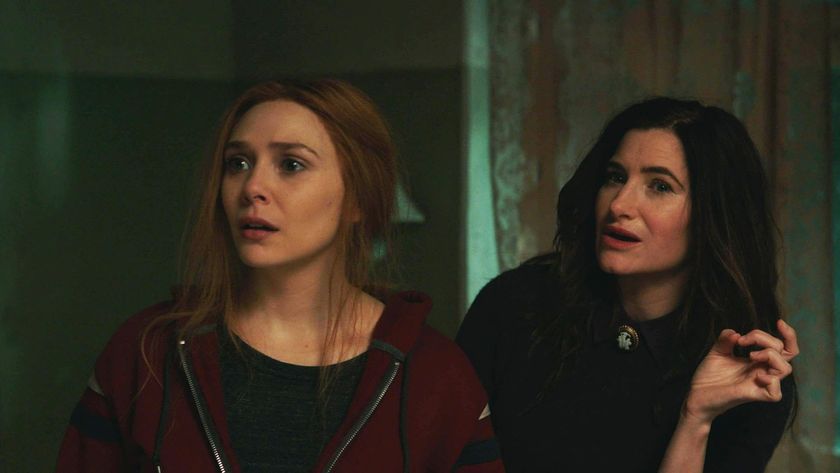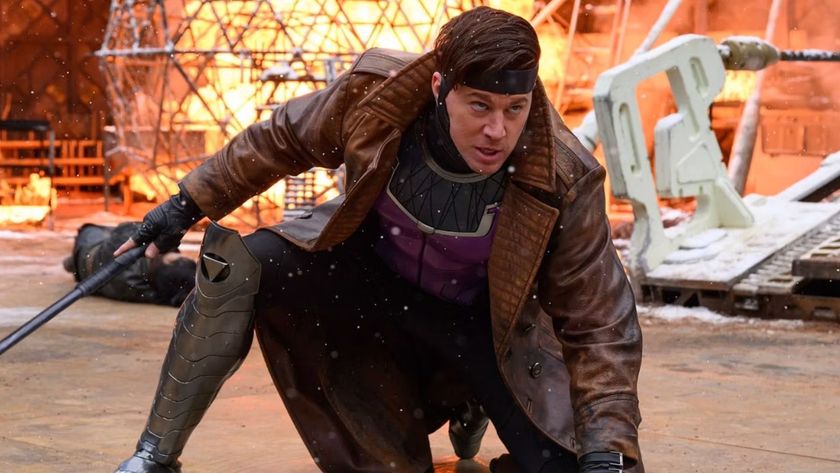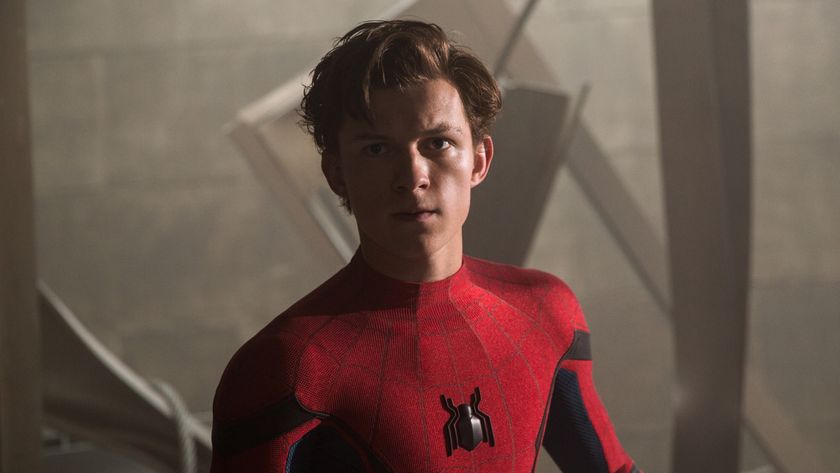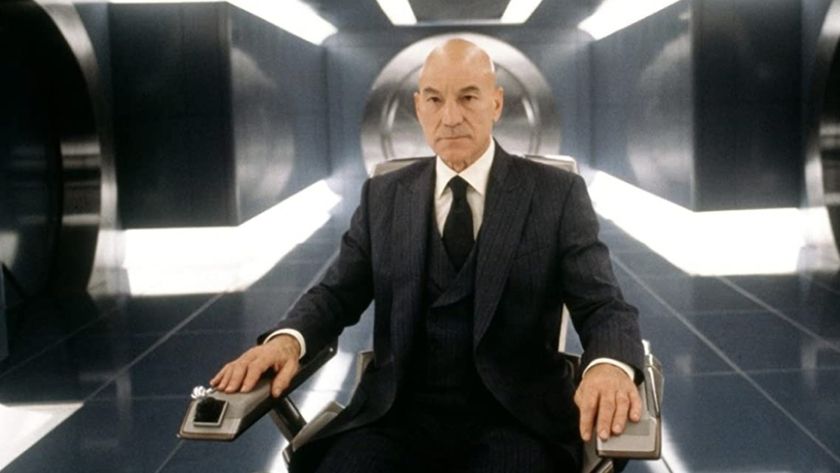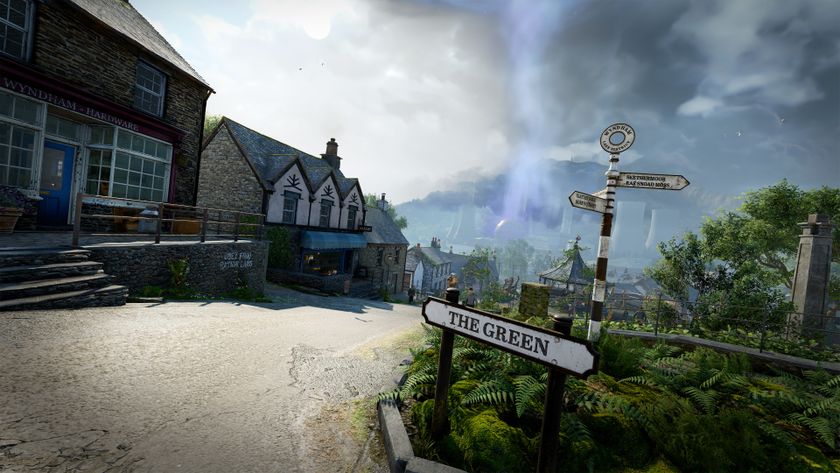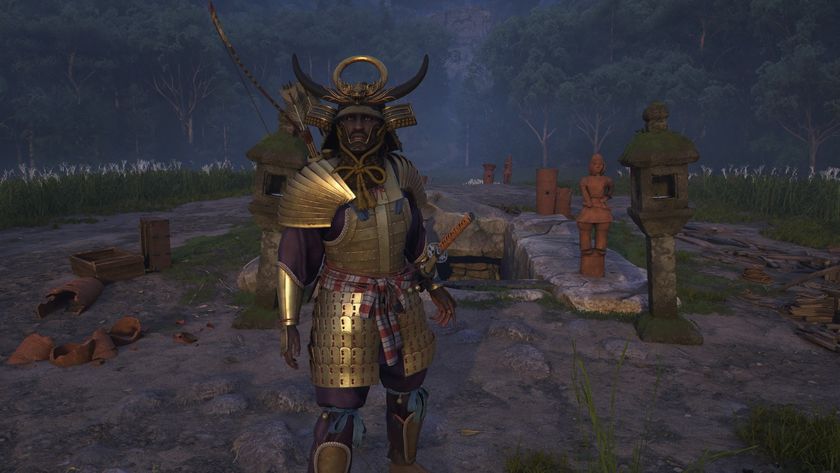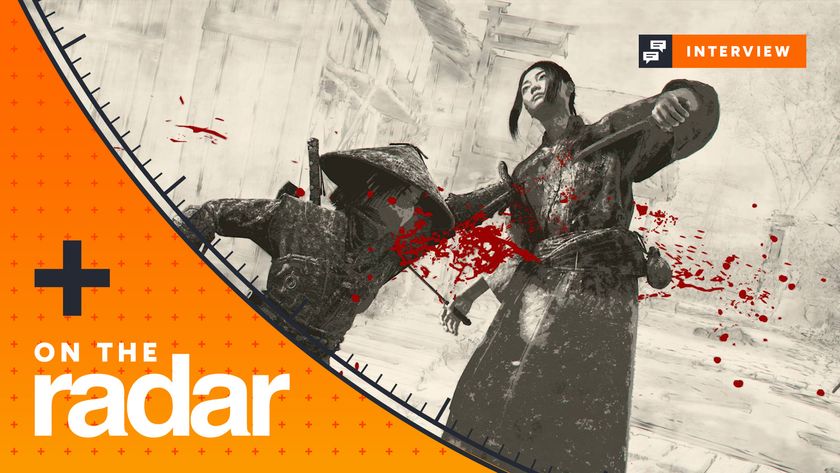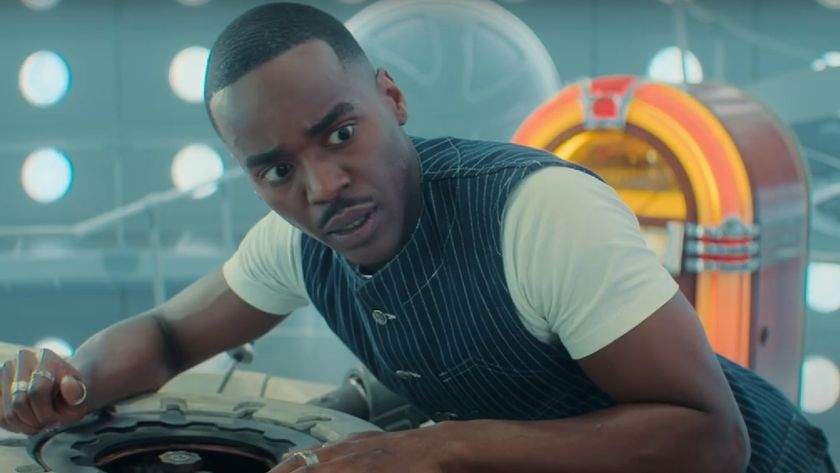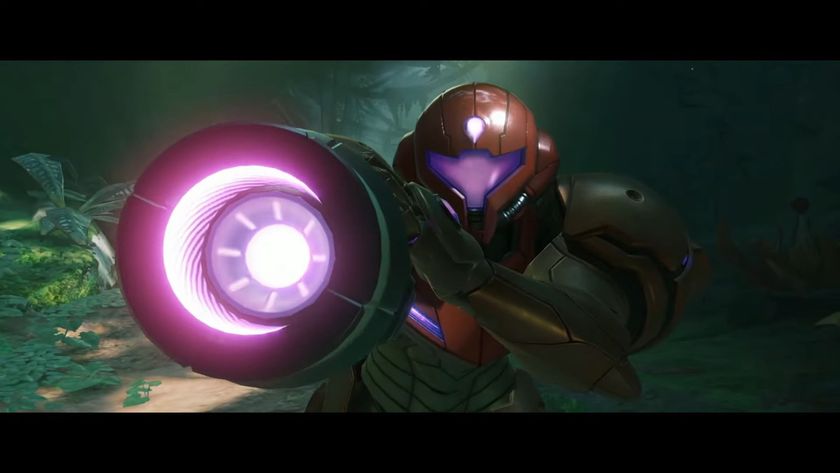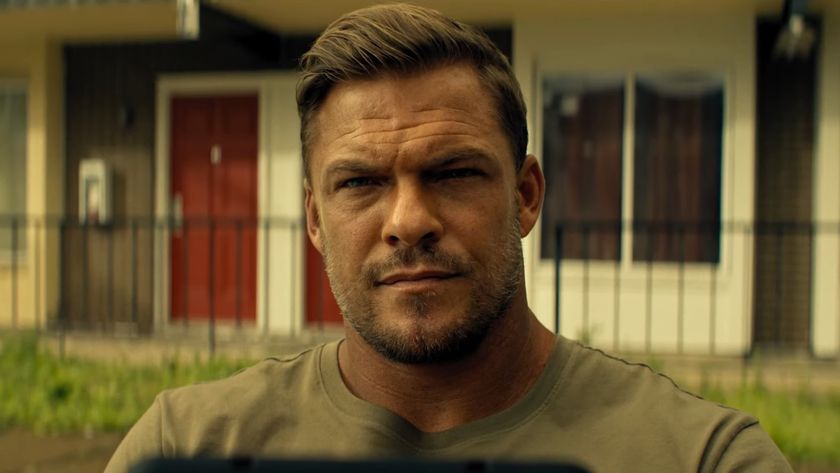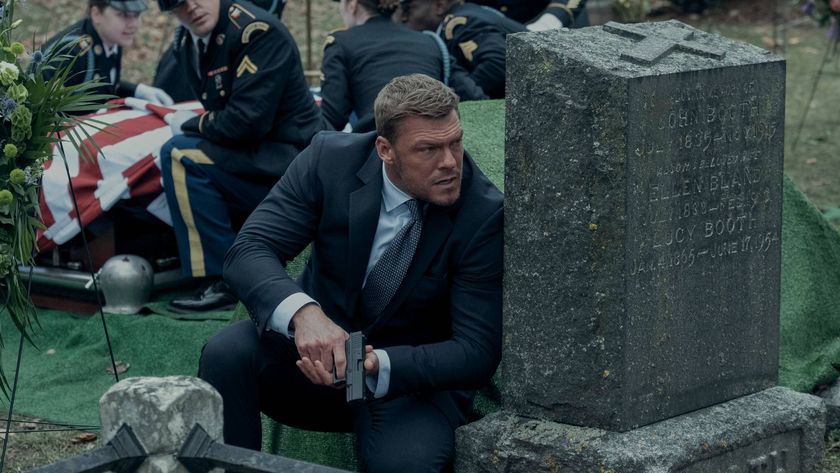Dracula FROM THE SFX ARCHIVES
Back in SFX 123, Ian Berriman looked at the Hammer film which made Peter Cushing a horror star.
Dracula .
Open your French windows, uncover your necks, and prepare for the blood-sucking of your lives as Ian Berriman sinks his canines into the Hammer Dracula .

1958
Director: Terence Fisher
Writer: Jimmy Sangster
Cinematographer: Jack Asher
Production Designer: Bernard Robinson
Music: James Bernard
Editor: Bill Lenny
Producers: Anthony Hinds, Anthony Nelson Keys, Michael Carreras
Cast: Peter Cushing, Christopher Lee, Michael Gough, Melissa Stribling, Carol Marsh, Olga Dickie, John Van Eyssen
Sex and violence: the two driving forces of the human psyche. The need to reproduce and generate, the desire to murder and destroy; two urges that can both excite and repulse us. Combine the two and you have cinematic dynamite. Hammer's 1958 mounting of Bram Stoker's classic novel does just that.
It's a cinematic landmark, because it gave the horror film a transfusion of hot plasma. Before Hammer’s Dracula , vampires were bat-eared freaks or ghoulish Transylvanian creeps; director Terence Fisher changed all that. As he said: "My greatest contribution to the Dracula myth was to bring out the underlying sexual element in the story." Fisher turned the act of blood-sucking into an orgasmic release. "He's basically sexual", the director said of Dracula, "At the moment he bites it is the culmination of a sexual experience". Ever since, vampires have been alluring sexual predators and vampirism has been seen as a rite of passage into a dark world of transgressive passion.
Hammer's first foray into the gothic, The Curse Of Frankenstein (released in May 1957), was a phenomenal success, grossing 30 times its original cost. Having hit upon a winning formula, they were eager to repeat it, and adapting Dracula was a logical next step. After lengthy negotiations a deal was struck with Universal (who still owned the rights, after their 1931 adaptation starring Bela Lugosi).
Jimmy Sangster - fresh from his success on Curse - was hired to write the screenplay. He read Stoker's 1897 novel twice and knocked out his first draft in just four weeks. He’d only been writing for about 18 months, but as a former production manager for Hammer, had one great strength. "One of the reasons [producer] Tony Hinds employed me", he admitted, "was because he knew I was aware of Hammer's way of working and I wasn't going to write anything into my scripts that they couldn't afford to shoot." Sangster ruthlessly chopped out many elements of the book for financial reasons. A Hammer budget couldn't stretch to a sea voyage to Whitby and a shipwreck, so the story was confined to inland Europe.
Sign up to the SFX Newsletter
Get sneak previews, exclusive competitions and details of special events each month!
Other changes were made to speed up the narrative. Here, Jonathan Harker is not a naive innocent, but a vampire-hunting colleague of Van Helsing who deliberately sets out to destroy Dracula. In an anticipation of Hitchcock's Psycho , the character is killed very early on. Dracula's lunatic disciple Renfield was also excised for reasons of timing, while Dracula's ability to transmogrify was dropped for the sake of realism. "I thought that the idea of being able to change into a bat or a wolf or anything like that made the film seem more like a fairy tale than it needed to be", said Sangster, "I tried to ground the script to some extent to reality."
Shooting began at Hammer's home of Bray Studios on 11 November 1957. Curse Of Frankenstein ’s two leads - Peter Cushing and Christopher Lee - were hired again, despite the fact that both could have been considered unsuitable for their roles. Cushing's steely, urbane Van Helsing bore little relation to Stoker's character. "In the book, Van Helsing was a little old gentleman who almost literally speaks double-Dutch", Cushing observed. "When I was cast I said to Tony Hinds, 'Oughtn't we to get a little double-Dutchman?' and he said 'No, I think the thing to do is to play him as you.'" For the general public of the time, Dracula was strongly identified with Bela Lugosi's thickly-accented portrayal. Christopher Lee's approach was to ignore what his predecessor had done. "I'd not seen the original... I deliberately chose not to, to avoid being influenced... I decided that my source would be Bram Stoker's novel, and I read it twice," said Lee, "Neither [Terence Fisher] nor anyone else really knew how to present the character. I had read the book and I thought, 'here's a man who is romantic, erotic and heroic: that's the way I should play him'"
Lee's well-spoken Dracula was closer to the character as originally written, and his charming demeanour made his bouts of snarling, feral violence all the more shocking. His imposing 6' 4" frame and Mediterranean good looks also meant that, for the first time, Dracula could set the hearts of his female victims racing with lust as well as fear. Lee's Dracula is a sensual figure whose attacks are thinly-veiled sexual initiations.
Some of the film's finest scenes are these seductions. In Dracula's nocturnal visits to Lucy, the repressed sexuality of Victorian England threatens to burst at the seams. As she lies on her bed waiting for Dracula, her bosom heaves and her eyes glint with the feverish anticipation of a bride on her wedding night. As Terence Fisher remarked, "It's almost ballet, the way she opens the doors, goes back and lies down again, her eyes focused, waiting for him to appear."
This is no case of a modern-day interpretation being overlaid on an innocent scene. The sexual undercurrent was deliberate. In the scene where Mina returns after a night with Dracula, Fisher’s directions to the actress were frank and unambiguous. "When she arrived back after having been away all night she said it all in one close-up at the door. She'd been done the whole night through, please! I remember Melissa [Stribling] saying 'Terry, how should I play the scene?' So I told her, 'Listen, you should imagine you have had one whale of a sexual night, the one of your whole sexual experience. Give me that in your face!'"
Lee remembers the shoot with obvious pleasure. "We had a lot of fun. Peter Cushing and I used to giggle a lot and behave disgracefully... all the time we'd keep saying to each other, 'Wouldn't it be marvellous if I could do this, if I could do that, because it would get a big laugh!'". Melissa Stribling recalls Lee's mischievousness in a scene where Dracula tosses Mina into an open grave to bury her. "Chris Lee was nothing if not keen... he jumped in and made a funny remark to the director about, 'You can leave us alone for a while - I'm not going to waste this opportunity!'"
Click on "Next" to keep reading this feature.
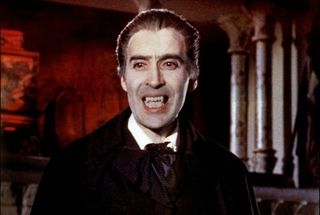
The same scene caused Lee no little embarrassment when the time came to hurl Mina into the hole. Stribling's stunt double turned out to be unexpectedly tubby! "How I picked her off the ground, don't ask me... it's the sort of thing that happens when somebody says, 'Action!’ the adrenaline just rockets through your body. I picked this girl up and I flung her into the grave, and I lost my balance and fell in on top of her!"
Lee also had endless trouble with the blood-red contact lenses he had to wear for several scenes. "They irritated my eyes so that I wept copiously, which was utterly out of character for the heartless Count. Furthermore, they hindered me from seeing where I was going, so that I was constantly crashing into people and falling over things," Lee recalled. "I'd start to cry and charge past the camera, knocking everybody over, tears falling down my cheeks."
The last sequence to be shot was, fittingly, the final scene. Stoker's original novel is disappointingly anti-climactic: after pursuing Dracula across Europe for weeks, Harker and Van Helsing simply prise open his earth-filled chest and stab him in the heart. Sangster's script had a similarly muted ending: Van Helsing chases Dracula into his castle, whips out a crucifix to prevent him escaping through a trap door, and the vampire is caught in the rays of the dawn sun. We have Peter Cushing to thank for the heroics that have made this one of the most fondly remembered of all film finales.
"I suggested that it is always a good idea to have some sort of almost Douglas Fairbanks scene, to have a jolly good leap or jump!" Cushing later recalled. "I suggested the run along the refectory table to jump onto the curtain and hit Dracula square in the face with the sunlight." Cushing was keen to perform the leap himself, but "dear Terry wouldn't let me, in case I was injured" so a stuntman took his place.
Cushing also came up with the idea of Van Helsing forcing his nemesis into the sunlight by making an impromptu crucifix from a pair of crossed candelabra. "Van Helsing was like a salesmen for [crucifixes]. They were practically coming out of his ears. He gives one to Mina, one to the little girl, he was throwing them in coffins, and so on. At the end he was supposed to pull out another one. I remembered seeing a film years ago called Berkeley Square, in which Leslie Howard was thought of as the Devil by this frightened little man, who grabbed two candelabra to make the sign of the cross with them. I remembered that this had impressed me enormously."
With the completion of this sequence on Christmas Eve 1957, principal photography came to an end. Special effects work continued, with the film finally wrapping on 3 January 1958. Dracula went on general release in the UK on 16 June 1958. Critical response combined admiration for the film's technical qualities with appalled revulsion at its content. The Daily Mail 's reviewer virtually foamed at the mouth, declaring, "There should be a new certificate 'S' for sadistic, or just 'D' for disgusting". The Daily Worker 's critic was also spitting blood: "I came away revolted and outraged... this film disgusts the mind and repels the senses." Naturally, the paying public lapped it up, and the film eclipsed even the success of The Curse Of Frankenstein . As Christopher Lee notes, "the profit/cost ratio was higher than for any other British picture ever made".
For Lee, the film's success was a mixed blessing: the role of Dracula became something of a curse. Fearful of becoming typecast, he wisely refused to play the role again until 1966. Despite his reluctance, he went on to make six more appearances as the Count for Hammer. Often he was morally blackmailed by producers who pointed out that actors and technicians would be out of work if he refused to take the role. Years of being constantly identified with this one role understandably bred a little resentment. Nevertheless, Lee remains very proud of the 1958 Dracula - as does Terence Fisher: "Everything was just right about that film; the script, the casting, everything just clicked. The chemistry just worked the whole way. A wonderful experience".
TRIVIA
Christopher Lee has just 16 lines and speaks a total of 248 words. He’s only on-screen for about six minutes.
The film's budget was £81,412. Peter Cushing's fee was £2500. Lee's pay was a mere £750. He used the money to buy himself a second-hand Mercedes!
To accentuate the Count's otherworldly nature, no sound effects of his footsteps were placed on the soundtrack.
To maintain the mystery about the Count's appearance, photographers visiting the set were only allowed to shoot Christopher Lee from behind.
In the USA the film was distributed under the title Horror Of Dracula , to avoid confusion with Universal’s 1931 Dracula , which was still being booked into cinemas there.
At one point in the film, Van Helsing puts his fur-trimmed coat around a little girl and says she looks "like a teddy bear". This is an anachronism, since the phrase "teddy bear" wasn't coined until 1902.
Ian Berriman twitter.com/ianberriman
Read more of our Peter Cushing centenary features and reviews.
Ian Berriman has been working for SFX – the world's leading sci-fi, fantasy and horror magazine – since March 2002. He's also a regular writer for Electronic Sound. Other publications he's contributed to include Total Film, When Saturday Comes, Retro Pop, Horrorville, and What DVD. A life-long Doctor Who fan, he's also a supporter of Hull City, and live-tweets along to BBC Four's Top Of The Pops repeats from his @TOTPFacts account.
